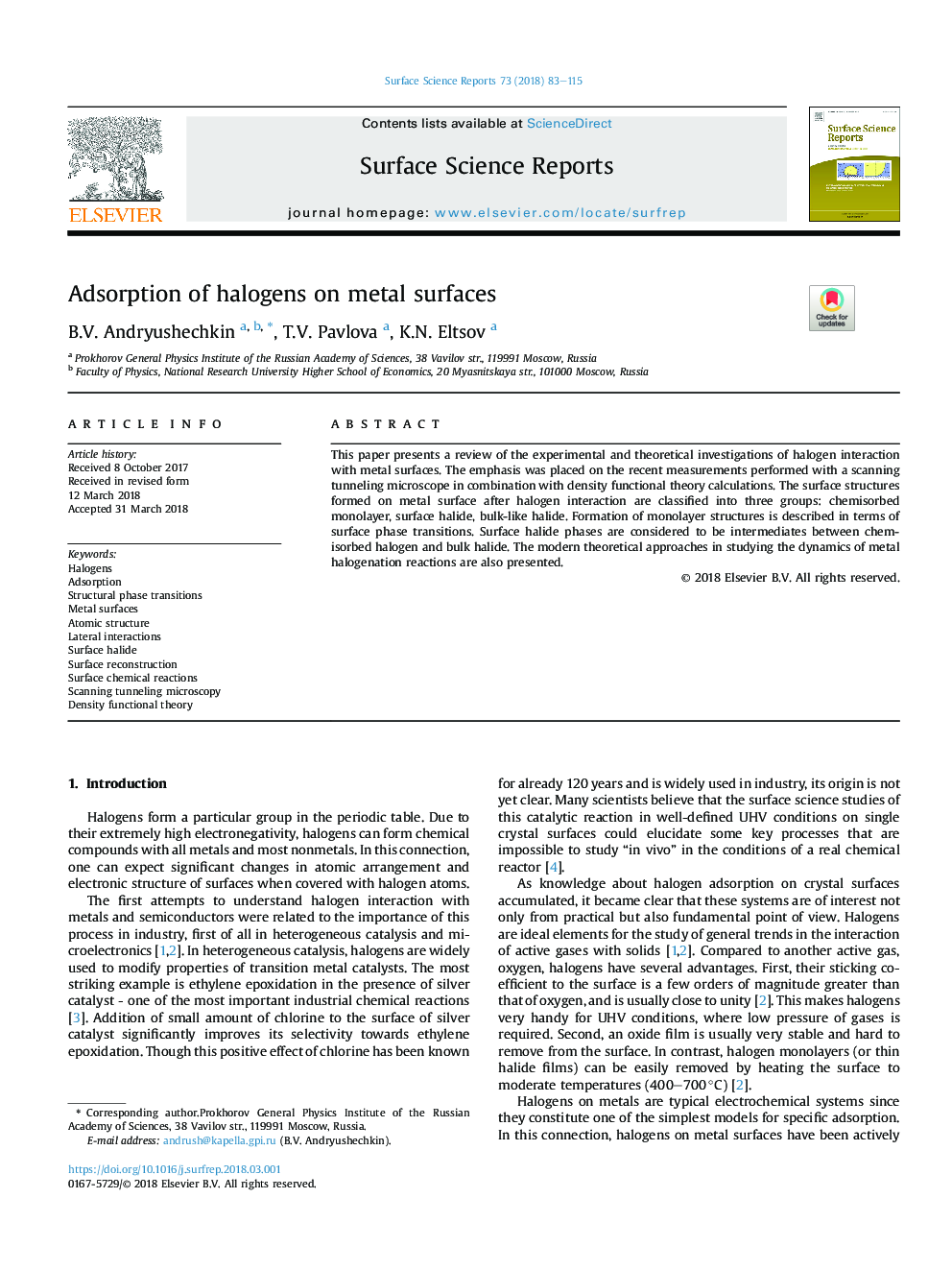| Article ID | Journal | Published Year | Pages | File Type |
|---|---|---|---|---|
| 7844977 | Surface Science Reports | 2018 | 33 Pages |
Abstract
This paper presents a review of the experimental and theoretical investigations of halogen interaction with metal surfaces. The emphasis was placed on the recent measurements performed with a scanning tunneling microscope in combination with density functional theory calculations. The surface structures formed on metal surface after halogen interaction are classified into three groups: chemisorbed monolayer, surface halide, bulk-like halide. Formation of monolayer structures is described in terms of surface phase transitions. Surface halide phases are considered to be intermediates between chemisorbed halogen and bulk halide. The modern theoretical approaches in studying the dynamics of metal halogenation reactions are also presented.
Keywords
Related Topics
Physical Sciences and Engineering
Chemistry
Physical and Theoretical Chemistry
Authors
B.V. Andryushechkin, T.V. Pavlova, K.N. Eltsov,
